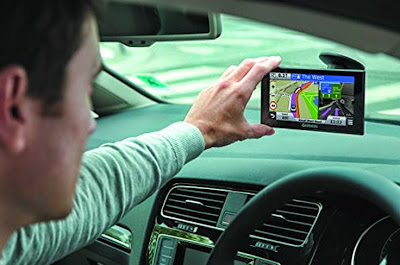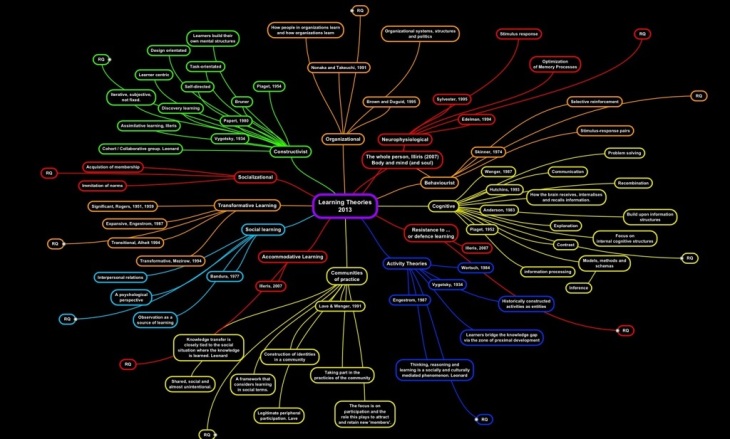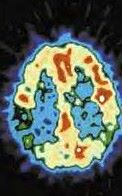Home » E-Learning » Neuroscience
Category Archives: Neuroscience
Proud and happy to call myself a ‘Master of Arts’
 |
| From E-Learning V |
Fig.1. Mr Kung Fu – was he the master or the pupil?
When I completed enough modules early last year to graduate as a ‘Master of Arts: Open and Distance Education’ I felt like a fraud; I’d scraped through, more importantly I didn’t feel I was ‘fluent’ enough in the subject. One module, H817 had been replaced and had felt a little dated at the time. This is why I’ve ended up doing a couple more MA modules from the MAODE – I have only one missing from the full set (H817 Open) which I may do in due course. I could even put it towards an M.Ed (Masters degree in Education) for which I also need the compulsory 60 point module Educational Enquiry which next registers a year from now.
| From E-Learning V |
Fig.2 The forgetting curve
Confidence to call myself a ‘Master’ and belief by others that I know my subject led me to being asked to join the Open University advisory panel on the MAODE and in the same week to join the board of advisors for a national educational body that recently met. Now I feel I have enough of ‘the knowledge’ at my fingertips. I prepared for this first meeting my searching through this blog: it shouldn’t surprise me to know how much I’d forgotten, studying why and how we forget is very much a part of education – it is summed up in the Forgetting Curve (fig.2) that Hermann Ebbinghaus thought up over a hundred years ago.
 |
| From E-Learning V |
It intrigues me that no gadget we own can circumvent this: that in fact, take a SatNav for example, let’s assume that it takes you on a journey in the correct direction. Let’s say you keep using the SatNav regardless. You could probably turn it off after two or three of these trips as your brain lays down the landmarks in your longterm memory. Thinking of which, I think the SatNav makes an excellent model for e-learning; just image you need to learn 120 absolute facts as a junior doctor – you could have your SatNav ‘peg’ the facts to specific points of a familiar journey. When you sit the exam it’s then as easy as driving this route in your mind’s eye visualisation everyone of the facts along the way.
I wander, cloud like.
I’m writing up my notes from this national advisory panel and over the next four years can hopefully nod at the courses that appear on which I’ve had some influence. Still not there yet, but I’m one heck of a long way further on since February 2010 when I re-booted this malarkey.
The answer has to be a P.hD. And I guess the only place to do that would be with the Open University. I went off the boil on that one a year ago, though I did secure a couple of interviews but came away suitably crushed.
It will have taken by then, at least ten years, more like 12 or 13, to call myself a ‘Digital Scholar’.
We are what the chemical processes in our brains say we are
 |
| From E-Learning V |
Increasingly, and coming from different angles, the science is showing by how much who we are is dictated by the chemistry going on in our heads. Actually, we are our chemistry; that’s how the brain works, but what I mean is that perhaps far more of this is determined by a combination of genetics – or chemical responsiveness, and what we eat – the chemicals we put into the system (just think what coffee, alcohol and drugs do to the brain, what we think, remember and how we behave), our behaviour (the chemical released say at moments of stress or excitement) and illness – so another environment factor.
I’d looked up dopamine. The wikipedia entry is so detailed it reads like an academic paper written by a committee of post-doctorate students. Fascinating.
All kinds of drugs mess or play or ‘fix’ such chemical reactions alter behaviour; as these become increasingly ore sophisticated the opportunity to intervene becomes greater. Then what?
I’ve just woken from two movie like dreams: stories with a beginning, a middle and an end. There was no message and I’ve already forgotten every detail. I could have made an effort to hook back into the last dream but chose not to. I have yet another mission: 2500 words, a synopsis and a scene breakdown for a novel. At the end of September I’m away for a week on a Writer’s Retreat. I’d love to be on the OU Creative Writing Course but that’ll have to wait another year, by which time I may have saved up the course fees, or had a hint of getting published (doubtful), or of course, neither. On this front I’m doing the OU Creative Writing Massive Open Online Course (MOOC) with Future Learn that starts in October. See you there?
Does exposure in the sense of ‘open’ learning work?
Fig. 1. what collaboration online looks like? Activity theory meets neuroscience. This could be many heads knocking together, or the internal workings inside one.
I’m getting a sense of deja vu as the rhythm of H818 reveals itself. I’m doing the Open University module H818:The Networked Practitioner. It runs until Jan 2014.
Openness comes with caveats. It is not everyone’s cup of tea.
As people we adjust our behaviour in different environments. I am not saying that we necessarily behave in the same way in an Open Studio online (a virtual studio no less) than we do or would in an open studio, as in a collective in a workshop or ‘atlier’ that is ‘exposed’ to fellow artists in the physical world, but wherever we are ‘open’, in the physical or virtual worlds, we are nonetheless prone to human interaction with all the usual undercurrents.
For all those busy exposing themselves, the easiest default position, someone – ‘one’ being the key word, has the door closed and is getting on with the job without the distraction of others. Is achievement and success of necessity a lonely, not a ‘connected’ activity? You can do the networking once you have a product to sell or a well formed opinion to share … otherwise this is nothing more than ‘chatting’ in the First World War sense of the word – idol banter to pass the time between periods of conflict.
What I believe will not work is to put a gaggle of creators in the same room and expect them to collaborate. The studios of the ‘open’ type that I am aware of are either the classic Rennaisance workshop with a master artist and apprentices at various stages of their own development, or, with a similar dynamic in operation, the ‘occupants’ of a studio, or business unit cum workshop, are exposed LESS to each other and more to external commentators and contributors. This requires some formality to it .i.e. not simply ‘the person off the street’ but an educator/moderator in their own right.
It also helps if people have parricular skills sets that when combined work together – as in a team producing a film.
Is H818:The Networked Practitioner too dependent on chance? The foibles of a small cohort of postgraduate students with little in common and complete strangers … and the complex, messy, moments ‘we’ are each in. Actions differ between those who have had the course paid for by their institution, those who are doing it out of their own pocket for career advancement which requires the degree and anyone in it ‘for the love of it’ – with full-time employment, part-time employment or retirement, and any number of other commitments that colour participation and attitudes.
Over three years of this and, by chance only, surely … six of us strangers in a subgroup jelled. More often the silence and inactivity of the majority makes ‘group work’ a myth – partnerships of two or three were more likely. The only exception I have come across in the ‘real world’ have been actors working together on an improvisation – they have been trained however to disassociate their natural behaviours. The reasons why that ‘six’ worked has been a topic I have returned to often – team dynamic, spread around the globe on different time zone, all experienced practitioners and typically on our second or third OU module … digitally literate, socially networked …
Some of us study with the OU as we cringe at the ‘exposure’ of a course that requires us to meet in the flesh – distance learning suits, to some degree, the lone worker who prefers isolation.
By way of revealing contrast I am a tutor at the School of Communication Arts – a modest though pivitol role given their format and philosophy – exposure to many hundreds of kindred spirits who have been there … a sounding board and catalyst. NOT a contributor, but more an enabler.
We’ll see. My thinking is that to be effective, collaboration or exposure needs to have structure, discipline and formality. Of course this is or should be exactly what the ‘Open Studio’ platform provides. But like a restaurant, however lovely the decor, if the place is empty no one will be eating the food.
At the Brighton Arts Festival the other evening I wonder how the 80 odd exhibtors would cope if the Cornexchange was also their workshop? In certain, vulnerable environments, the only comment should be praise. Feedback is invited from those who are trusted.
A school setting is different again, as is college … people share the same space because they have to.
Open Studio apears to try to coral the feedback that comes anyway from a connected, popular and massive sites such as WordPress, Linkedin Groups, Facebook and even Amazon. Though the exposure, if you permit it, is tempered and negotiated – Facebook is gentle amongst family and friends, Linkedin is meterd and professional in a corporate way, WordPress is homespun while Amazon, probably due to the smell of money, can be catty – and in any case, the artefact is a done deal it’s not as if, to take a current example, Max Hastings is going to rewrite his book on the First World War because some in the academic community say that it is weak historicaly and strong only on journalistic anecdote. Some of the reviews read like they were posted by a PR department, not a person. Another story, but can we smell a rat as easily in the virtual as in the physical world?
We’ll see.
The nature of learning – through travel, online, face to face … and in your head
I love to travel, not just on holiday with friends and family, but alone. Maybe this happens to you too, but I always find travel, especially new trips and destinations, are a catalyst to reflection.
All I did was take the first train out of Lewes to spend the day at the University of Birmingham.
Two things come to mind that shook my brain: St. Pancras International … and, sounding like a commercial, Virgin Trains. Although the train was quiet two people came through the train to collect rubbish … as bubbly as buttons. Four times. The toilets were spotless. All in very sharp contrast to Southern Trains out of London where everything was overflowing …
St.Pancras International reminds me of the first time I stood in Gar du Nords, Paris and looked up at destinations that included Moscow. Inside and out St.Pancras says that travel is a ‘grand adventure’.
I last studied ‘lecture style’ 31 years ago, yet I have signed up for one of these while I continue my learning journey online with the Open University through all the Master of Arts in Open and Distant Education (MA ODE) modules.
Learning is learning – it neither takes place online or off. It is in your head. It is what the brain is given a chance to do with it that counts.
I can now weigh up the two as I study in two very different ways in parallel.
There is of course ‘blended learning’ too that in a planned way mixes up both use of e-learning and face to face.
The key to successful use of elearning, offline or blended is the same of course – ‘planned’.
I met a fellow student on the MA in British First World War studies who, like me, has just completed a degree with the Open University (OU). He has a BA in History, while I now have the MA ODE. We immediately began to share notes on this ‘new’ experience of making our way to and now being physically present in the senior common room of a faculty on a traditional campus – Birmingham doesn’t look the way it sounds … (Forgive me Birmingham but you have a reputation, which isn’t for grand Victorian buildings and exciting architectural ‘super builds’).
The OU is of ourse ‘open’ to anyone – online learning makes formal learning possible for any of us who either need to stay in one place, or, by contrast, are always on the move. People who need significant flexibility in how they manage their time … and don’t want the cost in time and money to get to a place for a tutorial, seminar, lecture or conference. And people who ‘don’t get on with people’ – not just agrophobia … you know what I mean.
Nothing beats getting to know your fellow students than spending a day with them, during coffee and comfort breaks, at lunch, walking through the campus, in seminar rooms before a talk begins … and on the way home when you find part of your journey is shared. Online attempts to ‘get to know each other’ can be spurious exercises in sharing trivia about pets and holidays. Actually, you can get to know eachother by talking about what you are here to do – the subject matter.
Relationships formed online are akin to a long distance phone call, or letters to a stranger, even, oddly, having a chat with the postman or a builder … you let them into your house.
And your head?
Not so much a learning environment so much as a learning tool kit
FIG.1. Projected onto the sitting room wall
The migration between kit and now the use of multiple devices tells its own story – that and my enhanced levels of digital literacies.
And dependency on my Open University blog???
I am too used to starting there then cutting and pasting the HTML results into WordPress (here). This platform works because it is kept simple. OK, you have to get your head around a few basics (which are good for any blogging platform), but the thing is stable and robust – it hasn’t changed much in three years and it is always there.
Either I’ll wean myself off it or I’ll plugin to another module of course and be here for another decade.
You get used to a thing – especially when it works. Calls to other institutions regarding their VLE have left me cold – some still old school box of books and turn up for an all day Saturday face-to-face once a month as your only tutor and peer group contact.
From a clapped out Mac Book that died and a Psion I moved on to a borrowed PC laptop … and scrounging computer access around the home. Only recently I got a Mac Mini – for the previous 18 months I’ve been fine on an iPad with moments on my wife’s PC to view and print off DOCX.
The Mac Mini gets what ever screen my teenage son leaves me with – he tends to snaffle away any new screen I get, just swaps them over. I may take me days to realise something is afoot.
And then there is the above – projected onto a wall with me working on a wifi keyboard and touchpad. It changes things. Next to this screen there is a large whiteboard. I get up and doodle.
As for the sitting room? Long gone.
Cries for a TV to bring the family together fall on deaf ears. Why would any of us gather to watch ONE version of an event when we can each take or leave our news, or films, or anything else as we please on a bigger or smaller screen in various other rooms and cubby-holes around the house?
An iPad mini will replicate when I had a decade ago with a Psion, something handheld, light and discrete that I can tap on whenever I wish and wherever I am.
‘The Private Life of the Brain’ Susan Greenfield is my current highly recommended read. It is certain to take you off on a tangent from whatever you are studying, but if offers a layperson’s view of the inner workings of the brain.
How great is the impact of anything on the brain?
Fig.1. From Prof. Susan Greenfield’s 2012 presentation on consciousness
My belligerent stance on the impact of computers to the brain – not much in my view, we’re too complex, our brains too massive (94 billion neurons) has been tipped on its head courtesy of a short interview on good old BBC’s Woman’s Hour last Thursday. The interviewee was Susan Greenfield (Professor & Baroness).
She invited listeners to get in touch if they wanted the facts on ‘mind change’ – as big as ‘climate change’ in her view, that as the brain is affected by everything that hours spent in front of a 2 dimensional world (sound and vision) our minds, especially younger, plastic brains, will form connections that make these people different.
I particularly liked the thought that all the time a child spends in front of a screen is time NOT spent ‘climbing trees, interacting face to face and having hugs’. I may be adrift at the moment but have a reading list for the summer.
Shell-shock – there’s evidence of the impact of circumstances on the brain. But playing on your computer for too long? Too much free will to cause ‘damage’?
Every bit of you contributes to your learning experience
When it comes to learning, everything matters – epecially the tips of your toes.
‘Human learning is the combination of processes throughout a lifetime whereby the whole person – body (genetic, physical and biological) and mind (knowledge, skills, attitudes, values, emotions, beliefs and senses) – experiences social situations, the perceived content of which is then transformed cognitively, emotively or practically (or through any combination) and integrated into the individual person’s biography resulting in a continually changing (or more experienced) person’. Knud Illiris (2009:24)
In 1980 I worked the winter season in a Hotel in the French Alps. It was a 13 hour working day that started at 6.00am and included three hours off over lunch – 12h00 to 15h00. That’s when I went skiing – in all weather. That season, like this, had an abundance of ‘weather’ with more snow than even Val d’Isere could cope with. An avalanche took out an entire mountain restaurant … or rather burried them. They were fine and re-opened after a few weeks. Towards the end of the season I would shot up the slopes, in my M&S suit, with a plasticated boiler-suit like thing over it and skied the same run maybe 11 or 12 times before returning to the hotel and an afternoon/evening of carrying bags, digging cars out, taking trays of food, cleaning and translating French to English for the Hotel Manager. I had a Sony Walkman cassette player. I played Pink Floyd ‘The Wall’ and skied to ‘The Wall’.
33 years on, using the same skis if I want, the music on an iPhone, I manage three to five turns at a time … rest … three to five more turns … rest … three to five turns and take a suck on my Ventolin inhaler …. and so on.
And what comes to mind?
‘The Rise and Fall of the Roman Empire’ Gibbon and Alexis de Tocqueville ‘L’Ancien Régime et la Révolution’ – both required reading before I started my undergraduate year of History later in 1981.
These are the games the brains plays on you. I can now of course recall Madame Raymond, the Hotel Manger, The Sofitel, Val d’Isere and Christian, the waiter who taught me to ski … and the word for dust ‘poussiere’.
And while up here 33 years later I have so far got through three books:
‘The A to Z of Learning Theory’ (2002), David Leonard; ‘Contemporary Perspectives in E-learning Research’ eds. Grainne Conole and Martin Oliver and ‘Contemporary Theories of Learning’ edited by Knud Illeris (2009) … from which I drew the above quote. The first covers some 150 learning theories – by the time you’ve finished it you may conclude that there is life and learning while death brings it to the end. As Illiris states, everything counts. The second is one of those academic compillations of papers. The title is disengenious as I could not find in ONE single paper (chapter) any attempts to give a perspective on e-learning research, rather these are papers on e-learning. Period. While the Knud Illiris edited book does the business with some great chapters from him, from Etienne Wenger and Yrjo Engestrom. So one is the K-Tel compilation from Woolworths, while the latter is ‘Now E-Learning’.
As it is still snowing I may have to download another book.







